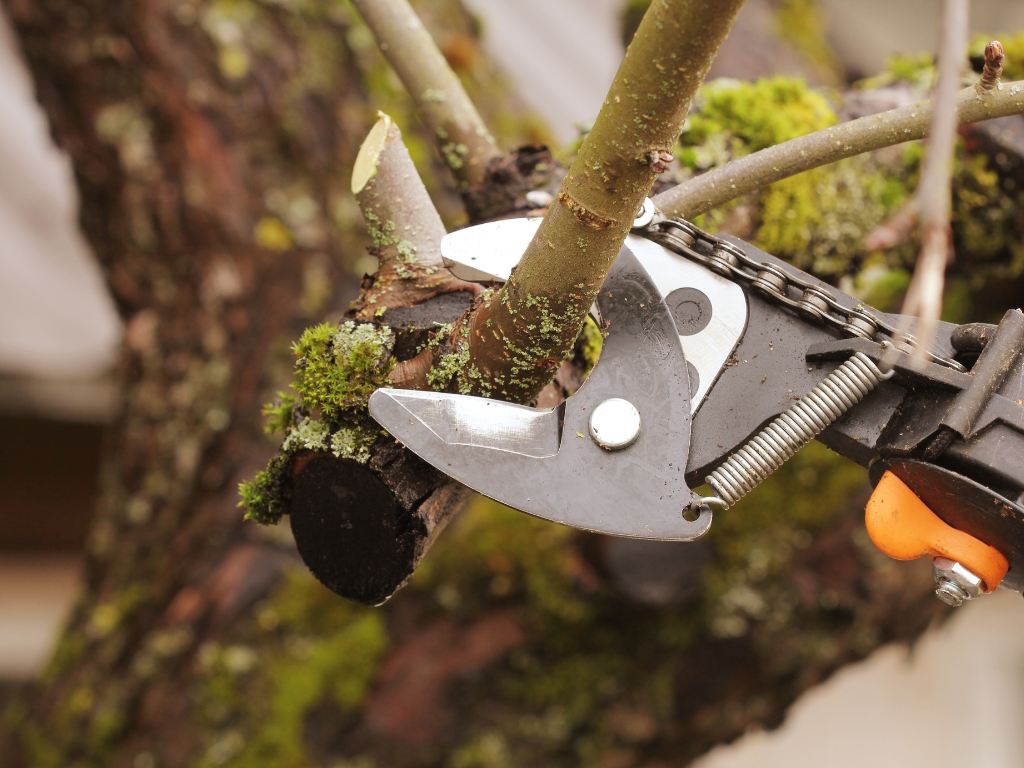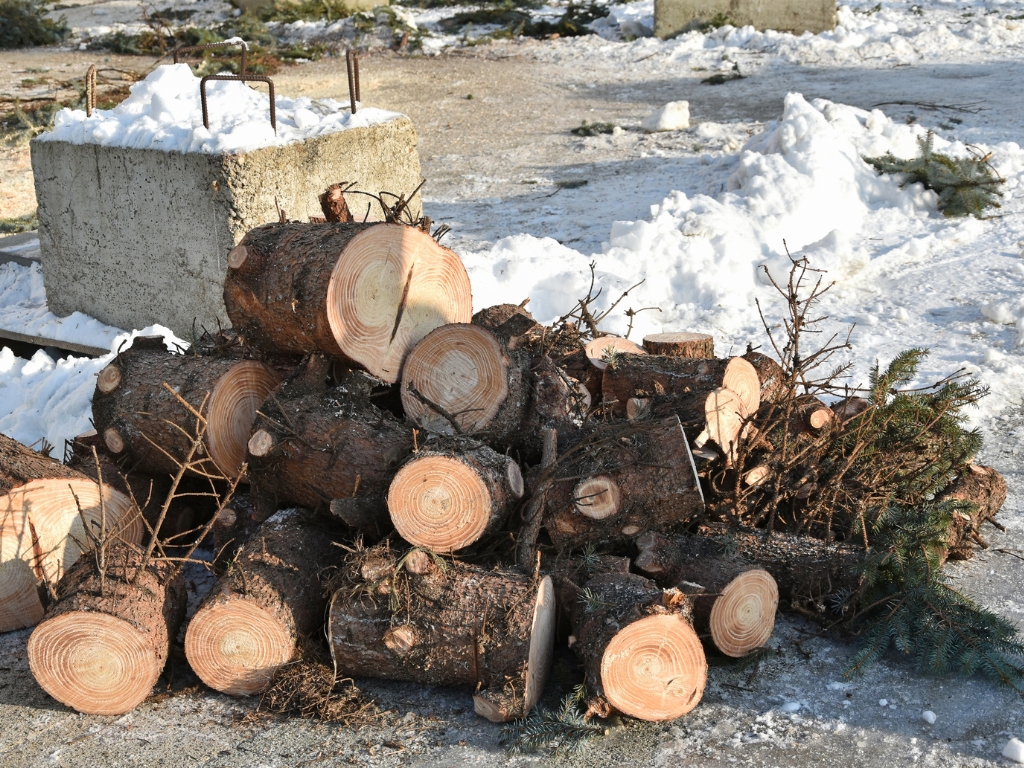Healthy trees are essential to the ecosystem. They provide shade, absorb carbon dioxide, release oxygen, and serve as habitats for countless species. On a smaller scale, a healthy tree can also increase property value, reduce energy costs, and enhance the aesthetics of any landscape. However, like all living organisms, trees can fall prey to tree diseases and become sick. Recognizing the signs of a diseased tree or a dead or dying tree early can be vital to ensuring its longevity, preventing the spread of pathogens to other infected trees, and safeguarding nearby trees and plants.
When trees are left unattended in their sick state, they can pose risks not just to their tree health but also to the surrounding environment. They may become weak and more susceptible to falling, thereby posing threats to property and human safety. By identifying these signs early on, necessary interventions can be taken to either restore their health or make informed decisions about their removal.
Sign 1: Unusual Leaf Discoloration
One of the initial indicators of tree disease is leaf discoloration. Healthy tree leaves are typically vibrant and consistent in color. However, when trees are sick, their leaves might turn yellow, brown, or even have a scorched appearance.
Different tree diseases and deficiencies can lead to varying leaf colors. For instance, iron deficiency can turn leaves yellow while still keeping the veins green. Conversely, fungal infections like oak wilt might result in brown spots.
While seasonal changes can naturally lead to leaf color changes, it’s essential to differentiate between these natural shifts and signs of a diseased tree. Observing the tree over time and comparing it with other trees in the vicinity can help distinguish between the two.
Sign 2: Premature Leaf Drop
A healthy tree has its own cycle of shedding leaves, primarily seen in deciduous trees during the fall. However, if a tree starts dropping leaves prematurely or in excessive amounts outside of its typical season, it might be a cause for concern.
This can be a sign of various issues ranging from tree root damage, water stress, or specific tree diseases. For instance, a sudden drop in leaves during summer can be an indicator of a fungal infection or pest infestation.
It’s crucial to monitor the pattern of leaf drop. Occasional shedding might be natural, but a consistent and unusual drop pattern can indicate signs of a diseased tree that needs attention.
Sign 3: Peeling Bark or Cracks in the Trunk
The bark serves as the protective layer for trees. When it starts to peel or crack, it may expose the tree to external threats like pests or diseases.
Slight peeling or shedding might be natural for some tree species as part of their growth. However, large cracks, areas of missing bark, or excessive peeling could indicate underlying issues such as fungal infections or mechanical damage.
It’s essential to regularly inspect the tree’s trunk. If large portions of the bark are missing or there are deep cracks, these are signs of an infected tree that might require intervention.
Sign 4: Mushrooms or Fungi at the Base
The presence of mushrooms or fungi at the base of a tree might seem innocuous, but it could be a sign of internal decay.
Fungi feed on decaying organic matter, indicating possible rot within the tree’s roots. This doesn’t mean every mushroom or fungi presence signifies doom. Some can live in harmony with the tree. However, certain types, like the honey fungus, can be detrimental to tree health.
Regular inspection of the tree base and being knowledgeable about the types of fungi can help in distinguishing between harmless fungi and signs of a diseased tree.
Sign 5: Unusual Growth or Bulges on the Trunk
Bulges or outgrowths, often referred to as burls, can appear on the tree’s trunk. While they can sometimes be due to genetic mutations or stress, they might also indicate areas where the tree is trying to seal off damage or disease.
These growths can weaken the tree’s structure, making it more susceptible to breaking. Furthermore, the presence of pests or pathogens can lead to such deformities. If a tree exhibits these unusual growths, especially if they’re rapidly increasing in size, it’s another sign of a potentially infected tree.
Sign 6: Insect Infestations
Pests and insects can be significant indicators of a tree’s health. Trees that are stressed or weakened are more susceptible to infestations. Common pests like emerald ash borers, tent caterpillars, or bark beetles can cause severe damage to trees.
They can lead to defoliation, reduced growth, or even death in extreme cases. It’s essential to periodically check for signs of insect activity, like exit holes or sawdust at the base. The presence of unusual insect activity can be one of the signs of a sick tree that needs intervention.
Sign 7: Weak or Dead Branches
Branches that are dead, weak, or brittle can indicate a lack of nutrients or the presence of disease. While it’s common for trees to have occasional dead branches, consistent or widespread dieback is concerning.
Diseased branches can be a hazard as they’re more prone to breaking, especially during storms. Moreover, tree diseases that affect branches can often spread to other parts of the tree. Routine pruning can help in removing these dead branches, but if the issue persists or spreads, it might be one of the signs of a sick tree.
Sign 8: Root Decay or Damage
While roots are not always visible, signs of their decay or damage can manifest above ground. Trees with damaged tree roots might show reduced growth, leaf discoloration, or even lean to one side.
Root diseases, like root rot, can weaken the tree’s foundation, making it susceptible to toppling. Besides, damaged tree roots can hinder the tree’s ability to absorb water and nutrients.
If a tree shows signs of poor health and there’s evidence of fungi near the base or waterlogged soil, it’s possible the roots are compromised, indicating signs of a sick tree.
Sign 9: Slime or Oozing Substances
When trees ooze a slimy substance or sap, it can be a response to some form of stress or injury. Trees might produce sap as a defense mechanism against pests or diseases.
The nature and color of the ooze can provide clues about the underlying issue. For example, bacterial infections might produce a dark, foul-smelling ooze.
While some sap production is natural, especially in trees like pines, excessive or unusual oozing might be one of the signs of a diseased tree.
Sign 10: Sparse Canopy or Reduced Growth
A tree’s canopy should be full and vibrant during its growing season. If it appears sparse, with fewer leaves or branches, or the tree shows reduced growth compared to previous years, it might be a sign of distress.
Multiple factors can contribute to reduced growth, including soil conditions, water availability, and diseases. Persistent issues might indicate chronic stress or underlying diseases that hinder the tree’s growth potential.
Monitoring the tree’s growth pattern and comparing it to past seasons can provide insights into its health. A consistently sparse canopy or stunted growth can be signs of a sick tree.
What To Do With A Sick Tree
When you identify that a tree is sick, prompt action can often mean the difference between saving the tree or losing it. Here’s a comprehensive guide on the steps you should take upon identifying a sick tree:
- Confirm the Diagnosis: Before taking any action, ensure that the tree is indeed sick. It’s possible to misinterpret natural processes or seasonal changes as symptoms of a disease. Observing the tree over a period and comparing its symptoms to healthy trees can help in making an accurate diagnosis.
- Consult an Arborist: Always seek expert advice. Arborists are trained professionals who specialize in the care and maintenance of trees. They can provide an accurate diagnosis, recommend treatments, or suggest if the tree needs to be removed.
- Isolate the Affected Tree: If possible, limit the spread of the disease by isolating the affected tree. Prevent any contact or close proximity with healthy trees, especially if the disease is contagious. This might include keeping a distance from healthy trees or even placing barriers, if practical.
- Water and Fertilize Appropriately: Over-watering or under-watering can stress a tree, making it more susceptible to diseases. Ensure the tree receives the right amount of water based on its species and age. Additionally, consider using appropriate fertilizers to strengthen its immunity.
- Prune Diseased Branches: By removing diseased or dead branches, you not only prevent potential hazards but also stop the disease from spreading further. Always use sterilized tools to prune, and dispose of the diseased material appropriately to avoid contaminating other areas.
- Apply Relevant Treatments: Depending on the diagnosis, there might be specific treatments available. This could include fungicides, insecticides, or other specialized treatments. Always follow the recommended dosage and application methods to ensure efficacy.
- Mulch Around the Base: Mulching can help in maintaining moisture, regulating soil temperature, and preventing the growth of weeds that might compete with the tree for nutrients. However, ensure the mulch doesn’t directly touch the tree trunk, as it can encourage rot.
- Consider Tree Removal: If all efforts to save the tree fail or if the tree poses an imminent threat to its surroundings, consider tree removal as a last resort. Removing a diseased tree can prevent the spread of the disease to nearby trees. Always employ professionals for tree removal to ensure safety.
Treating a sick tree can be challenging, but with the right steps and timely intervention, it’s possible to restore its health or make informed decisions about its future. Regular monitoring, seeking expert advice, and taking preventive measures can ensure the longevity and well-being of your trees.
Takeaway
Trees play an invaluable role in our ecosystem, offering numerous benefits from carbon absorption to habitat provision. However, their well-being can be compromised by various diseases and external factors.
Early detection can aid in implementing effective interventions or, when necessary, making difficult decisions regarding the tree’s future. Vigilant observation combined with informed action can preserve these majestic pillars of our environment for years to come.
For expert care that keeps your trees healthy and your property safe, choose Spear Bro’s Tree Service. From pruning to disease diagnosis, we’ve got your trees covered. Reach out to Spear Bro’s today and let us nurture the heart of your landscape.





